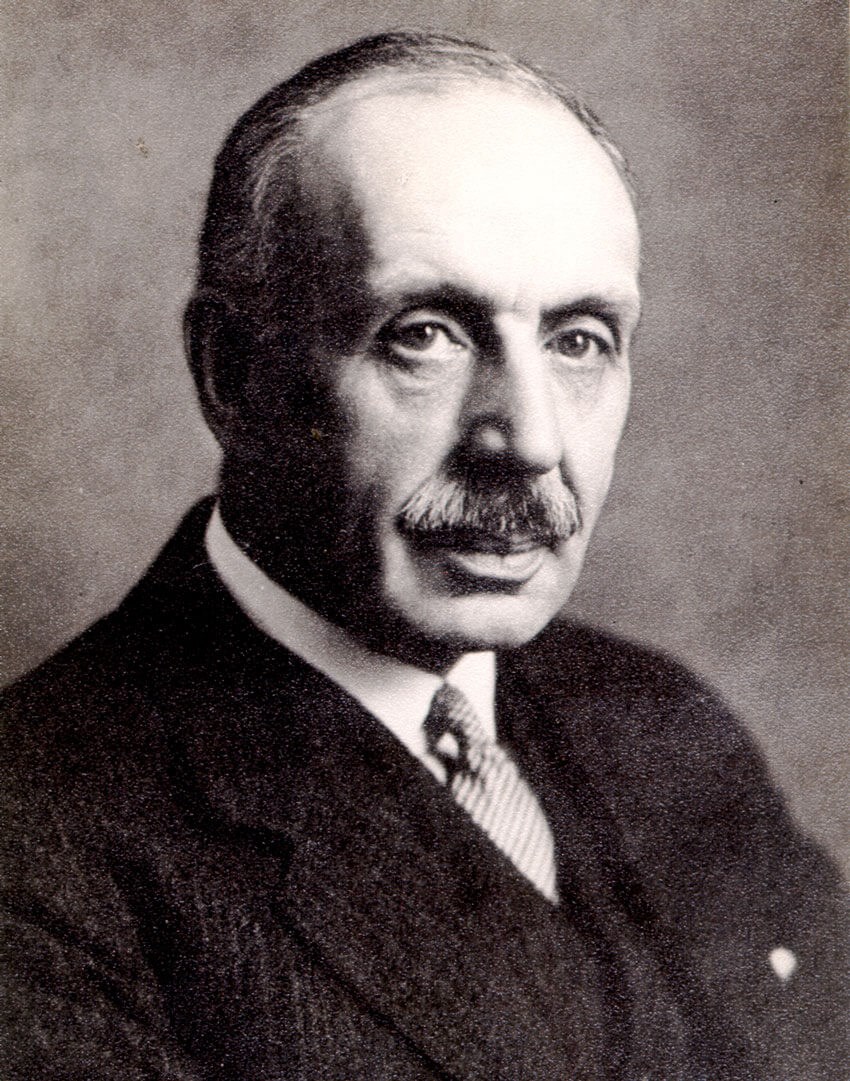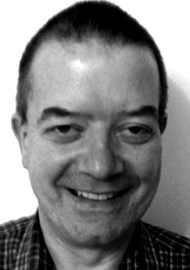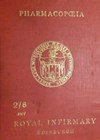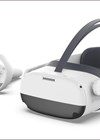It is a unique honour bestowed upon only a few clinicians, that their name becomes for evermore associated with the subject of their particular expertise and knowledge. Such an individual is undoubtedly Harry Moss Traquair, an Edinburgh-based ophthalmologist, who in the first half of the 20th century put the investigative study of visual fields and their interpretation (perimetry) onto a sound clinical and scientific basis.
Early life and medical education
Henry Moss Traquair was born on 13 September 1875 at Colinton Farm, near to Colinton village, an area south-west of Scotland’s capital city Edinburgh. From an early age, the young Traquair was always known within his family by the name of Harry. This was already an extraordinarily talented family. His father, Ramsey Heatley Traquair (1840-1912) was an authoritative zoologist, anatomist and palaeontologist, who became a Fellow of the Royal Society and later President of the Royal Physical Society. His mother, Phoebe Traquair (née Moss) (1852-1936) was a gifted Irish artist and book illustrator. No doubt the verdant countryside of Colinton would have been an idyllic setting to grow up in, and may have contributed to Traquair’s later enjoyment of trout fishing.

Portrait of Harry Moss Traquair, reprinted with the permission
of the Royal College of Surgeons of Edinburgh.
Traquair was educated at the independent Edinburgh Academy where he excelled at his studies. Upon leaving the Academy, he enrolled in the University of Edinburgh’s Medical School. Studying medicine would have seemed an obvious choice for someone so academically talented [1]. Unfortunately, during his undergraduate years, Traquair contracted tuberculosis, an ailment from which he never fully recovered. In an attempt to alleviate the symptoms of this disease, Traquair travelled to the warm climes of southern Africa (Orange Free State) where he gained useful clinical experience working as a general practitioner [1].
In 1896, with his health somewhat improved, Traquair decided to return to Edinburgh and the University’s medical school. It proved to be a timely decision as the Second Boer War was soon to begin in southern Africa [1]. Thus began a seminal period of great academic achievement and professional success for Traquair. And it was to be by no means the only such period in his life. In 1901, he graduated with first class honours in the degrees MB (Bachelor of Medicine) and ChM (Master of Surgery) [2].
Then in 1902, Traquair achieved the Diploma in Public Health and later that same year undertook a period of postgraduate medical study at the research-orientated University of Halle in the German state of Saxony-Anhalt [2].
In 1903, the University of Edinburgh awarded Traquair the postgraduate degree of Doctor of Medicine [2]. This period of achievement was concluded in 1904 when Traquair was elected a Fellow of the Royal College of Surgeons of Edinburgh (FRCSEd) [2]. Good fortune was to occur in 1905 when, on a visit to the town of Ventersburg in southern Africa, Traquair met Beatrix Nairn. The couple were married in 1906 and returned to reside in Edinburgh in 1908 [1].
A career in ophthalmology
It is not known what particularly attracted Traquair to the study of eye diseases and their diagnosis and treatment. However, ophthalmology, and in particular, neuro-ophthalmology, was to benefit enormously from his formidable intellect, relentless curiosity, and surgical skills.
Traquair’s ophthalmic specialisation began when he was appointed ophthalmic surgeon to the Edinburgh Eye Dispensary in 1910, becoming ophthalmic surgeon to Leith Hospital in 1912 and then assistant ophthalmic surgeon to the Royal Infirmary of Edinburgh in 1913 [3,4]. Whilst working in the latter institution, Traquair came under the tutelage of George Mackay, who taught the first course in practical ophthalmoscopy and refraction in Edinburgh [5].
Within the medical profession, interest in ophthalmology was growing, and in 1911 the Scottish Ophthalmological Club was founded with the intention that its members would share knowledge and discuss interesting ocular cases. The inaugural meeting was held in the Royal Infirmary of Edinburgh, with Traquair a founding member [6].
In 1886, the Edinburgh Pathological Club had been founded by the influential psychiatrist Sir John Batty Tuke, for the purpose of ‘discussing subjects connected with pathology’. Traquair was to give conscientious service as the club’s secretary between 1915 and 1920.
Again, it is not known exactly what drew Traquair to the subspecialty of neuro-ophthalmology and in particular perimetry. However, it should be noted that the University of Edinburgh Medical School had already formed a tradition of distinguished pioneers in neuro-ophthalmology with the famous clinicians Douglas Argyll Robertson (1837-1909), Sir George Berry (1853-1940) and Arthur H H Sinclair (1868-1962). Traquair was to follow in their footsteps and in particular further the study of visual fields [2]. In the second half of the 20th century, the tradition of advancing the subject of neuro-ophthalmology was to continue with the work of Edinburgh-based Professors, George Ian Scott (1907-1989) and James Finbar (Barry) Cullen (1928-2020). Prof Scott had been a student of Traquair.
Traquair appreciated that accurate perimetric examination could be of indispensable diagnostic value, not only to ophthalmologists but also to physicians, surgeons, and neurologists. In particular, certain characteristic visual field defects aided the examiner not just in making an accurate clinical diagnosis but also in locating where the pathology was in the visual pathway from the eye to the brain.
For most of the 20th century, kinetic examination of the central visual field was undertaken using the Bjerrum tangent screen, an instrument introduced to Europe by the Danish ophthalmologist Jannik Peterson Bjerrum (1851-1920) [2]. Keen to further his knowledge, Traquair travelled to Copenhagen to study the techniques of Bjerrum and his assistant Henning Ronne (1878-1947) [2]. In doing so, he was following a tradition already established by Sir George Berry and Arthur H H Sinclair. In later years, Prof George Scott also visited Copenhagen to study under Bjerrum. Traquair became a great proponent of the use of the Bjerrum screen (particularly when used at a distance of two metres from the patient), establishing detailed recommendations and standards for its implementation. The variously sized round ‘targets’ developed for use with the screen still bear his name.
By now Traquair had become an international authority on the subject of visual fields, their examination, and interpretation. This status was recognised when, in 1920, the British Medical Association awarded him the Middlemore Prize for original research [1].
Further acknowledgement was made in 1924, when the Oxford Ophthalmological Congress awarded him the Doyne Memorial Medal for contributions to ophthalmology [1]. More recognition of Traquair’s professional abilities came in 1927, when he was appointed ophthalmic surgeon in charge of wards in the Royal Infirmary of Edinburgh, and in the same year he took up a lectureship in diseases of the eye at the University of Edinburgh’s Medical School [1].
A landmark textbook
Nineteen twenty-seven was to be a remarkable year for Harry Traquair.
As well as the achievements recorded above, Traquair was to make an outstanding contribution to ophthalmology and medical science with the publication of his textbook: An Introduction to Clinical Perimetry [7]. The book was the culmination of Traquair’s exacting observations and original research obtained from many years of visual field testing.
Within the text’s early pages, Traquair memorably described the visual field as "an island of vision or hill of vision surrounded by a sea of blindness". It is fitting that to date this has remained the best-known and most appropriate definition of the visual field [8].
Traquair further pointed out that "perimetry is not done by the perimeter but by the perimetrist" [7].
It is little wonder that this textbook became a classic, and went on to become the international standard reference work – and atlas – on the subject of perimetry for many years, with the seventh edition being published in 1957. This final edition was entitled Traquair’s Clinical Perimetry, and was co-edited by Traquair’s former student Prof George Scott [8].
Throughout his career, Traquair was a prolific writer of academic articles and in 1948 authored a further textbook entitled Clinical Ophthalmology for General Practitioners and Students [9].
Advancing the study of visual fields
The study of perimetry and the pathological causes of visual field defects led Traquair to conduct rigorous original research into the causes of bitemporal hemianopia, the course of the geniculo-calcarine visual pathway, pituitary tumours, optic nerve disease (in particular retrobulbar neuritis), tobacco amblyopia and traumatic lesions of the optic tract. As a further result of his investigations, the characteristic visual field defect arising from damage at the junction of the optic nerve and the optic chiasm was to bear his name and become known as the Traquair junctional scotoma.
The University of Edinburgh
Traquair’s clinical and academic work mainly took place under the auspices of two institutions with which he had long associations: the Royal Infirmary of Edinburgh and the University of Edinburgh.
In recognition of his contributions to academia and ophthalmology, in 1932, Traquair was elected a member of the Senatus Academicus of the University of Edinburgh, the supreme academic body which regulates the teaching and research work of the University, a position he was to hold until 1941. His service to the university continued when he served on the institution’s governing body, the University Court, between 1941 and 1948 [1].
Further honours
The honours bestowed upon Harry Traquair and the prestigious positions he held in his lifetime would require a separate article to do them full justice. However, particular mention should be made of the following achievements:
In 1939, Traquair was elected President of the Royal College of Surgeons of Edinburgh (serving from 1939 until 1941). Later that year he was awarded the Mackenzie Memorial Medal from the Ophthalmological Society of Scotland. Also in 1939, he was elected an honorary member of the American Ophthalmology Society [1].
In 1943, with the Second World War raging in Europe, Traquair served as President of the Ophthalmological Society of the United Kingdom (1943-1944). This organisation was one of the forerunners of the present-day Royal College of Ophthalmologists. His presidential address was entitled ‘The Nerve Fibre Bundle Defect’ [2]. There is no doubt that Traquair would have felt particular pleasure when, in 1944, his home city bestowed upon him the honour of becoming a Fellow of the Royal Society of Edinburgh [2]. Throughout his life, Traquair suffered from relapses of tuberculosis, the attacks becoming more frequent and painful as he grew older. Sadly, on 14 November 1954, in the midst of such an attack, he passed away at the age of 79, survived by his wife, daughter and son [1].
Conclusion
Harry Moss Traquair was a true polymath. His interests included the arts, science and philosophy and he was an accomplished trout fisherman, at home on the riverbank.
However, it is in the field of neuro-ophthalmology and perimetry that his name will be forever remembered, not just at home but throughout the world.
As a result of his original research and subsequent publications, Traquair laid the foundations of the theoretical and practical aspects of perimetry. This continues to be of immense benefit to both clinicians and patients.
Harry Moss Traquair was truly a father figure within perimetry.
References
1. Obituary. Harry Moss Traquair. Br J Ophthalmol 1954;38:770.
2. Grzybowski, A. Harry Moss Traquair (1975-1954), Scottish ophthalmologist and perimetrist. Acta Ophthalmol 2009;87(4):455-9.
3. Boyd, DHA. Leith Hospital. Edinburgh, UK; Scottish Academic Press; 1990:87.
4. Turner, AL. The Story of a Great Hospital. Edinburgh, UK; Olive and Boyd; 1937:376.
5. Hirschberg, J. The History of Ophthalmology, Volume 8b. Bonn, Germany; Wayenborgh Verlag; 1988:100.
6. Scottish Ophthalmological Club.
https://www.s-o-c.org.uk
Last accessed December 2022.
7. Traquair, HM. An Introduction to Clinical Perimetry, 1st Edition. London, UK; Henry Kimpton; 1927.
8. Traquair, HM. Traquair’s Clinical Perimetry. Scott, GI. (Ed.). London, UK; Henry Kimpton; 1957.
9. Traquair, HM. Clinical Ophthalmology for General Practitioners and Students. London, UK; Henry Kimpton; 1957.
COMMENTS ARE WELCOME








